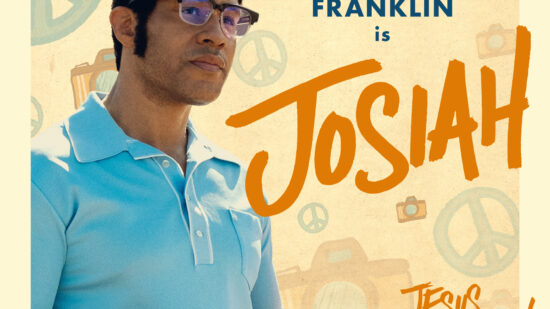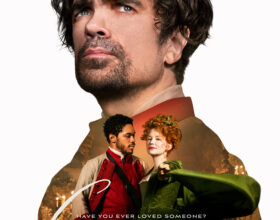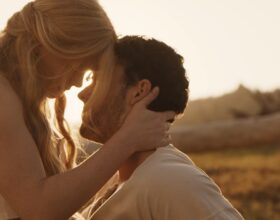Kenny Sailors was a 5-foot-8 teenager and his brother, Bud, stood nine inches taller. Their pickup games on the farm, where a basket was affixed to a windmill, were lopsided affairs because Kenny couldn’t get a shot off without his big brother raising a meaty paw and smacking the basketball into the Wyoming countryside. The Great Depression had not long ended, but Kenny’s was just beginning. If he hadn’t figured out something, you wouldn’t be reading this right now.
Tired of his attempts to score being returned to sender, Kenny Sailors happened upon something so simple, it has become a staple of every game played for decades: If he jumped and shot the ball at the height of his leap, he could score. Bud was so amazed by the first jump shot that he told Kenny, “You might have something there, if you work on it.” Until then, basketball was dominated by the two-hand set shot, feet planted firmly on the ground, and very little dribbling.
Three-time NBA champion Stephen Curry of the Golden State Warriors, perhaps the game’s best jump shooter and dribbler, owes so much of his living to Sailors’ discovery that he became one of the driving forces behind a documentary called Jump Shot: The Kenny Sailors Story. Though only one Scripture is referenced throughout the movie’s 79 minutes, Sailors repeatedly speaks as a man of faith with his priorities straight — God, husband, father, U.S. Marine. Basketball doesn’t even crack the top four.
The jump shot had an impact on Sailors, taking him from the farm outside of smalltown Hillsdale to the University of Wyoming and to the fledgling Basketball Association of America in 1946, which three years later merged with the National Basketball League to become what we know today as the NBA. From the farm, he was so consumed with the game that he had little time to pay attention to girls. One of his friends practically shoved him into a date with Marilynne Corbin, and a year later their nearly 60-year marriage began.
The movie presents a who’s who of basketball, talking about the impact Sailors had on the game. It was epitomized in a grainy, back-and-white photo that appeared in Life Magazine in 1946, showing him as a fully grown 5-10 guard leaping high and shooting a jump shot against Long Island University. That’s what grabbed everybody’s attention— of all the feet in the picture, everybody else’s are on the ground and Sailors’ are at least two feet above it. It’s his perfect form that coaches have taught for decades, without giving thought to the one who popularized it.
Sailors played professionally for five years, long enough to earn a pension, then disappeared from the public eye. Because Marilynne had asthma, doctors suggested moving to the country. Sailors moved to Alaska, where he hunted, fished, and fed horses oats and water out of a weatherbeaten, bedraggled-looking cowboy hat. He also started coaching girls basketball. But he kept playing, too. The movie begins with him at age 91, bouncing a basketball off the hardwood and into the net.
Once people started researching who made the jump shot a staple of the game, many were incredulous to learn that Sailors was not in the Naismith Memorial Basketball Hall of Fame. He is in the National Collegiate Basketball Hall of Fame, but not the bigger one. A group, spearheaded by former University of Wyoming basketball coach Jim Brandenburg, was determined to do something about it in 2015. The group put together a slick media campaign, aimed at shattering Sailors’ anonymity, and sent it to the committee which makes the decision.
Though they recognize Sailors as the father of the jump shot, committee members turned down his hall-of-fame bid without explanation. It’s only the second time during the documentary that you hear a cuss word uttered, Brandenburg employing a four-letter description for manure while vowing not to give up. The other is rather tame one uttered by the irascible, legendary Hall of Fame coach Bobby Knight, and when he’s part of the footage, you’re more surprised when he doesn’t drop bombs that’ll send you scurrying to cover your kids’ ears.
Sailors doesn’t make a big deal of being rejected by the hall, never losing his joyful disposition. “I know I belong to the greatest hall of fame that any man or woman can ever belong to,” he said. “When you belong to that, and you know you belong to that, you don’t worry about these halls of fame that men create down here. They don’t mean that much to you.”
Oh, yeah, about that Scripture. It’s Ephesians 2:8-9, which reads, “For it is by grace you have been saved, through faith — and this is not from yourselves, it is the gift of God — not by works, so that no man can boast.” Unfortunately, we read it off a granite tombstone. Sailors died in his sleep on Jan. 30, 2016, a little more than two weeks after his 95th birthday. Minutes after seeing that bedraggled cowboy hat perched amid the flowers on his oak-colored, closed casket, a viewer can rejoice, confident in the feeling that Sailors had fulfilled his calling.
“From a world standpoint, [people would] probably say I had a calling to play basketball,” Sailors said. “Basketball has given me an opportunity to speak to people that probably wouldn’t even have spoke to me if I hadn’t been a good ball player. And the Lord uses these things in the lives of individuals.”
This documentary merits the Dove-approved seal for All Ages and should truly be considered a worthy investment of your time.
The Dove Take:
The jump shot was Kenny Sailors’ leap of faith, and his gift ushered him into the presence of great players, where he could be a witness for the Lord.





